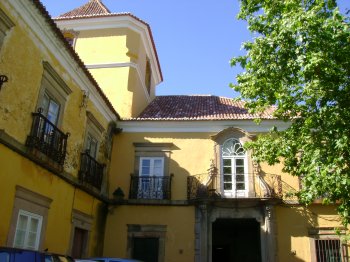Explore the best places
Discover new places in Portalegre
Centro de Artes do Espectáculo de Portalegre
- art
Praça da República, 39
7300-109, Portalegre
Space where several cultural activities take place.
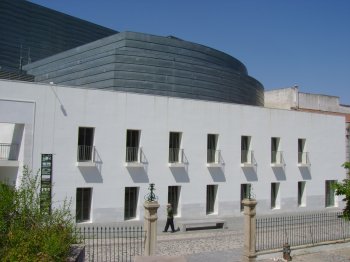
Solar do Forcado
- food & drink
Rua Cândido dos Reis, 14
7300-129, Portalegre
Luís Mourato followed in his father's footsteps, first as a pitchfork and now as host of the family's restaurant, which has been in existence for more than 30 years. A tribute to the bullfighting universe, the references are not limited to the decoration. The menu, where beef predominates, specialises in this matter with grilled kebabs and bull tenderloin. The stewed venison with migas is another of the house's signature dishes, along with the roasted suckling pig with wild mushroom rice. Accompany it with a wine from the region (the menu is extensive and exclusive to the Alentejo) and finish with …
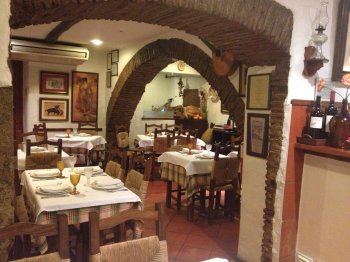
Tombalobos
- food & drink
Rua 19 de Junho, 2
7300-155, Portalegre
Em plena Serra de São Mamede, em Portalegre, a boa gastronomia alentejana, seja num bom petisco ou num delicioso prato, mantém-se de excelência, mas a preços mais democráticos. As pétalas de toucinho de porco alentejano no forno são de perdição, assim como os bicos de touro bravo ou as migas de pão com entrecosto sem osso. Açorda de fraca no forno e sardinhas albardadas com açorda de coentros são outras delícias a não perder.

Castelo de Portalegre
- heritage
Rua Luís Barahona, 8
7300-158, Portalegre
Castle founded by Dom Dinis in 1290, deployed in the most Uptown. Originally, had a double wall with twelve towers and eight gates. This unique construction, only a few walls and panels of three towers.
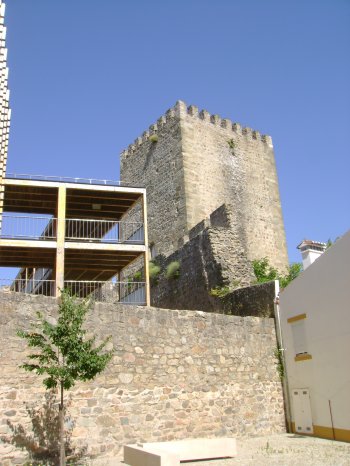
Muralhas do Castelo de Portalegre / Fortificações de Portalegre
- heritage
Rua 1º de Maio
7300-205, Portalegre
These walls with two doors were originally built on the 13th century. Later, on the 17th century, it was built the fortress with bastions from Portalegre enclosure.
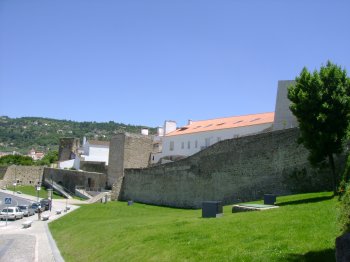
Convento das Trinas de Mocambo
- heritage
Avenida de Santo António
7300-074, Portalegre
The first cloister consists of a vast landscaped quad. The Center, a granite font dated to the 17th century.The two-storey cloister has four double arches on each side, separated outwardly by foothills monumental equipped. The second cloister is identical configuration, although smaller. The vaults of the cloisters have molded ribbing, based on cylindrical Corbels worked.

Convento de Santa Clara / Biblioteca Municipal
- heritage
Rua de Elvas, 54
7300-126, Portalegre
Convent built in 1376 the Queen Dona Leonor Teles. Features mainly Gothic features, but also some Baroque and Renaissance details. Suffered renovations in the centuries XVI, XVIII and XX. Currently, works here the Municipal Library.
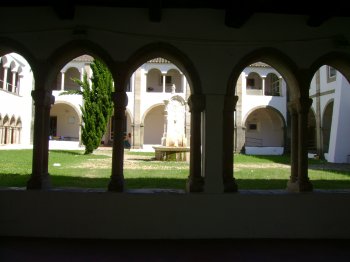
Parque Natural da Serra de São Mamede
- country
Ribeira de Arronches
7300-406, Reguengo
On the plain Alentejo region, the very idea of a hill is like the idea of an oasis in the desert. But that is precisely what the São Mamede Hill Natural Park is. This magnificent set of mountains, the highest to the south of the Tagus river, spreads from Castelo de Vide to the southeast and is topped by the São Mamede Hill (1025 metres maximum height). There are also the Castelo de Vide Hill (762 metres), the Fria (cold) Hill (953 metres) and the Marvão Hill (867 metres). The park includes the municipalities of Arronches, Castelo de Vide, Marvão …
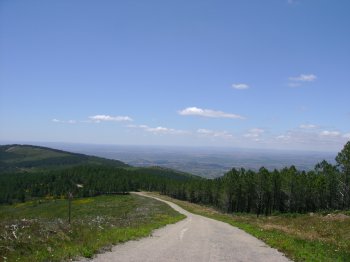
Museu Municipal de Portalegre
- heritage
Rua José Maria da Rosa
7300-110, Portalegre
Museum opened in 1918 and located in a 16TH-century noble home, located next to the Cathedral. After restoration, it reopened in 2012. The museological and museographic program highlights include the collection of religious art and of stoneware. In the temporary exhibition room is a painting exhibition patent about Portalegre with works by contemporary Portuguese painters, such as Manuel d ' Assumpção, John Tavares, Arsenic of resurrection, Welcome dinner, Abel Santos and Miguel Barrias, among others.
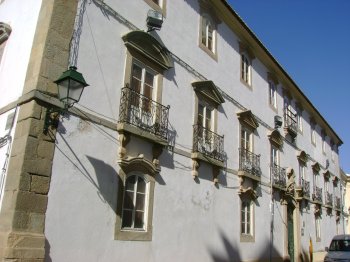
Palácio Amarelo
- heritage
Largo Cristóvão Falcão, 13-15
7300-089, Portalegre
This house was build in the middle of the 17th century; it suffered several transformations through the 18th and 19th centuries. From the original construction it only remains eleven windows in forged iron railings. The main door and the window on top of it are form the 18th century. On the building corners it can be observed the Coat of Arms from the families who lived here. We should also bring out the square and cornered tower with matting roof and four windows from the 19th century.
